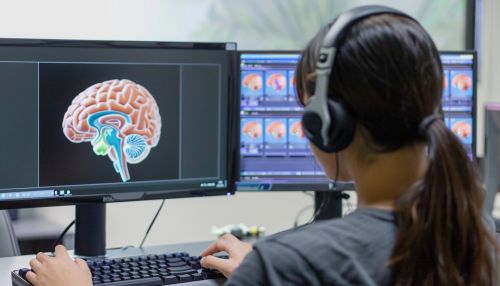Cognitive Mechanisms of Training and Neuroplasticity
Introduction
Cognitive training is a method of enhancing cognitive abilities through targeted exercises and activities. It is based on the principle of neuroplasticity, the brain's ability to reorganize itself by forming new neural connections throughout life. This article delves into the cognitive mechanisms involved in training and the role of neuroplasticity in facilitating these processes.
Cognitive Mechanisms in Training
Cognitive training involves the use of specific exercises to improve cognitive abilities such as attention, memory, and problem-solving skills. The underlying cognitive mechanisms that facilitate these improvements are complex and involve several areas of the brain.
Attention
Attention is a cognitive function that allows us to focus on specific stimuli while ignoring others. It is a critical component of cognitive training, as it enables us to concentrate on the tasks at hand. Training can enhance attention by strengthening the neural networks involved in selective attention, sustained attention, and divided attention.
Memory
Memory is another crucial cognitive function involved in training. It is the process by which information is encoded, stored, and retrieved. Cognitive training can improve memory by enhancing the efficiency of these processes. This is achieved through the strengthening of neural pathways involved in memory encoding and retrieval, and the enhancement of synaptic plasticity.
Problem-Solving Skills
Problem-solving skills involve the ability to identify problems, generate solutions, and implement these solutions. Cognitive training can enhance problem-solving skills by improving the efficiency of the cognitive processes involved in these tasks. This includes the enhancement of executive functions such as planning, cognitive flexibility, and decision making.
Neuroplasticity and Cognitive Training
Neuroplasticity, or brain plasticity, refers to the brain's ability to change and adapt in response to new experiences, learning, and injury. It is the underlying mechanism that allows cognitive training to result in lasting improvements in cognitive abilities.
Synaptic Plasticity
Synaptic plasticity is a form of neuroplasticity that involves changes in the strength of synaptic connections between neurons. It is the primary mechanism through which learning and memory occur. Cognitive training can enhance synaptic plasticity, leading to improvements in cognitive functions.
Structural Plasticity
Structural plasticity refers to the brain's ability to change its physical structure in response to learning and experience. This includes the growth of new neurons (neurogenesis), the formation of new connections between neurons (synaptogenesis), and changes in the density of dendritic spines. Cognitive training can stimulate these processes, leading to structural changes in the brain that support enhanced cognitive abilities.
Functional Plasticity
Functional plasticity refers to the brain's ability to transfer functions from a damaged area of the brain to other undamaged areas. This form of plasticity is particularly relevant in the context of cognitive rehabilitation, where cognitive training exercises are used to help individuals recover cognitive functions that have been lost due to brain injury or disease.


Implications and Applications
The understanding of the cognitive mechanisms of training and neuroplasticity has several implications and applications. It supports the development of effective cognitive training programs and contributes to the field of cognitive rehabilitation. Furthermore, it provides insights into the processes of learning and memory, and can inform educational practices.
Cognitive Training Programs
Cognitive training programs aim to improve cognitive functions through targeted exercises. These programs can be tailored to the individual's needs and can target specific cognitive functions such as attention, memory, and problem-solving skills. The effectiveness of these programs is supported by research showing that cognitive training can lead to improvements in these functions and that these improvements are associated with changes in brain structure and function.
Cognitive Rehabilitation
Cognitive rehabilitation is a therapeutic approach that uses cognitive training exercises to help individuals recover cognitive functions that have been lost due to brain injury or disease. The understanding of the cognitive mechanisms of training and neuroplasticity can inform the development of effective rehabilitation strategies and can help to predict the outcomes of these interventions.
Education
The insights gained from research on the cognitive mechanisms of training and neuroplasticity can also inform educational practices. They can contribute to the development of teaching strategies that enhance learning and memory, and can support the design of educational programs that cater to the individual's cognitive strengths and weaknesses.
Conclusion
Understanding the cognitive mechanisms of training and the role of neuroplasticity in these processes is crucial for the development of effective cognitive training programs and rehabilitation strategies. It provides insights into the processes of learning and memory, and can inform educational practices. However, further research is needed to fully understand these mechanisms and to optimize the use of cognitive training for cognitive enhancement and rehabilitation.
